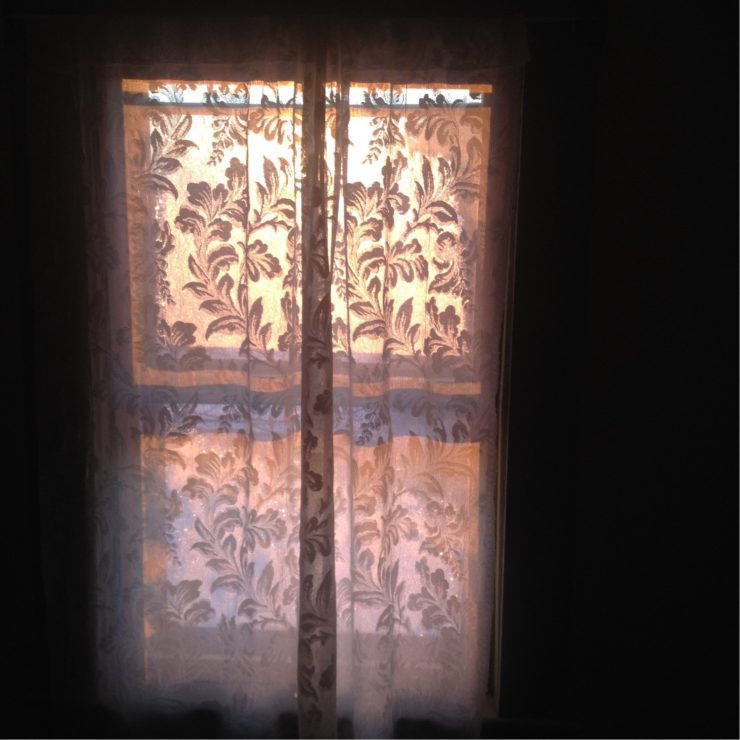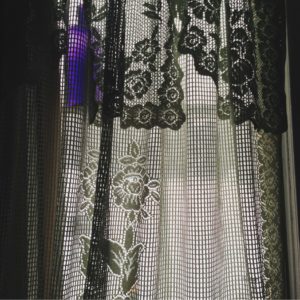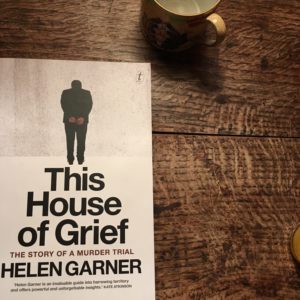
The sunrise of the winter solstice through a frost-covered window in the Maine countryside.
This week we celebrated the vernal equinox, this moment of rebirth and hope as we ease out of winter. (Of course, New England got hit with another snowstorm, as if winter was all Glenn Close in “Fatal Attraction” and “I won’t be ignored!”) So we took one last look at some beautiful writing about winter in the Katharine Seelye piece below. And in one of my favorite longform pieces of the week, we stayed with the harshness of the elements in a story about a 70-year-old who kayaked across the Atlantic, alone and naked.

Purple glass glows against the whiteness of snow in a farmhouse in Maine.
Katharine Seelye and “Life on an Island: Silence, Beauty and a Long Wait for the Ferry.” This story in The New York Times resonated with me, and not just because of my connection to Maine. As I write in the piece, it starts with the lede: “The snow had begun falling overnight, and fell throughout the day, draping the towering pines and the lobster traps, stacked up on land for the winter, in blankets of white.” There’s a hush to the language, a softness. The snow doesn’t blanket the land but is a blanket, as if a mother were placing a protective covering over her child. The piece is shot through with such gentleness, but it’s not a rosy-spectacled view of the island and year-round life there, which has a touch of the Raymond Carver about it. The bleakness, the hardship, the loneliness, they all collide with the beauty, and in that intersection Seelye found the specialness of the year-round residents of the island.
The soundtrack: “Enjoy the Silence,” by Nada Surf. I love this cover of the Depeche Mode song, which never moved me much. It becomes such a shimmering, brimful-of-heart pop song. I recommend the cover album it’s on, “If I Had a Hi-Fi.”
One Great Sentence
“The Revolutionary Hill Estates had not been designed to accommodate a tragedy.”
Richard Yates, “Revolutionary Road.” Read why we think it’s great.

Puppets from the Fratelli Napoli theater
In Sicily, an old oral storytelling tradition tries to revive itself in the 21st century. I love spotlighting oral storytelling on Storyboard, and although the focus is on the future of this tradition, it was cool to look backward in this piece. As contributor Stefania D’Ignoti writes of the Sicilian puppet shows, “In the 19th and 20th centuries, the shows could last a whole cycle of 300 episodes spread over five months. Once a week, the audience would meet at the theater and continue the story where it stopped the time before, like an old version of today’s TV series, but live. But this approach wouldn’t work for a 21st century audience accustomed to consuming entertainment quickly. ‘We deleted the long pauses in our storytelling in order to satisfy the modern audience,’ one champion said. ‘But this didn’t totally erase the dramatic suspense typical of this storytelling form; it was just updated to be more accessible.’”
The soundtrack: “Time Has Come Again,” by the Last Shadow Puppets. Yes, I chose this song for the band’s name, but the sense of a moment gone and yearned for fits the story. “Don’t go too soon/she went too soon.” By the way, this side project of the brilliant Alex Turner of Arctic Monkeys fame is great fun.
What I’m reading online: Why Would Anyone Kayak Across an Ocean — at 70? by Elizabeth Weil. It had me at the first seven words of the hed. Never mind that he was 70. And alone. And naked. (Clothes chafed.) I find it almost impossible to believe, not only the act itself, but the will to do it. But as the story in The New York Times Magazine says: “What most of us experience as suffering he repurposes as contrarian self-determination, and that gives him an existential thrill.”
What Does It Mean to Die? by Rachel Aviv. This New Yorker story about parents who refuse to unplug their young daughter after she’s proclaimed brain dead deals wonderfully with so many complex moral issues, about medicine, law, race, parenthood and, yes, even the question of death itself.
For Two Months, I Got My News From Print Newspapers. Here’s What I Learned, by Farhad Manjoo. I love this piece by The New York Times’ tech columnist (including the line, “I know what you’re thinking: Listening to a Times writer extol the virtues of print is like taking breakfast suggestions from Count Chocula.”) But it’s the conclusion that makes me cheer: “You don’t have to read a print newspaper to get a better relationship with the news. But, for goodness’ sake, please stop getting your news mainly from Twitter and Facebook. In the long run, you and everyone else will be better off.”
 What’s on my bedside table: “This House of Grief,” by Helen Garner. When you see Julian Barnes doing a blurb for your true-crime book, you know it’s going to be special. This book by the Australian writer of fiction and nonfiction, about a father on trial for the drowning deaths of his three young sons, takes you on a journey from disbelief and sympathy to the sinking weight of the truth. As Barnes writes, “It’s an examination not just of what happened, but also of what we prefer to believe and what we cannot face believing.”
What’s on my bedside table: “This House of Grief,” by Helen Garner. When you see Julian Barnes doing a blurb for your true-crime book, you know it’s going to be special. This book by the Australian writer of fiction and nonfiction, about a father on trial for the drowning deaths of his three young sons, takes you on a journey from disbelief and sympathy to the sinking weight of the truth. As Barnes writes, “It’s an examination not just of what happened, but also of what we prefer to believe and what we cannot face believing.”
 What’s on my turntable: “No Cover No Minimum” by Billy Eckstine. His voice is a bit too syrupy for me, but this is a nice album for a winter-meets-spring evening. For winter, we have “Moonlight in Vermont,” and for spring, we have “It Might as Well Be Spring.” The orchestration by Billy May is lovely.
What’s on my turntable: “No Cover No Minimum” by Billy Eckstine. His voice is a bit too syrupy for me, but this is a nice album for a winter-meets-spring evening. For winter, we have “Moonlight in Vermont,” and for spring, we have “It Might as Well Be Spring.” The orchestration by Billy May is lovely.
If you want to chat about storytelling (or music), I’m Storyboard editor Kari Howard, and you can reach me at editor@niemanstoryboard.org. Or you can find me at @karihow on Twitter.


